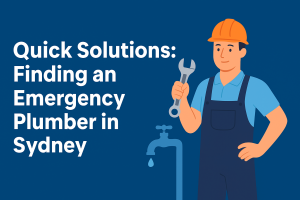Keeping your home clean is very important. It helps keep you healthy, boosts productivity, and keeps everyone around you happy.
The best way to do this is to keep yourself organized so that it doesn’t take too long to clean something up. This can be done by using pull-out bins under the bed or wherever else you store things in your house, buying cleaning supplies you use most often at bulk prices to save money, eagledumpsterrental finding ways to make it easier.
For example, using microfiber cloths instead of paper towels or cotton swabs for small projects is much more environmentally friendly than constantly throwing tissues into the trash after every cold. Read on for tips on how to keep your home clean and organized.
Do your laundry with wool dryers and other environmentally friendly products.
These wool balls are not only beneficial to the environment but also save your time and money as we know that ” The average American household spends about $1200 annually on electricity. That doesn’t just go to powering up appliances. It’s for drying clothes and dishes and running the central heating and air system.
Why should you use these? Lets face it, wool balls for dryer are an environmentally-friendly way to dry your clothes after laundry. It saves you money, reduces your electricity bills, and also makes your clothes softer.
They can soften a wool blanket and remove static from a wool coat. Wool dryers are safe for people who suffer from allergies to chemicals present in synthetic clothes or dryer sheets.
Reuse your plastic bottles.
Everyone knows that one of the best ways to keep your home environmentally friendly is by recycling. However, we don’t always think about recycling and reusing right in our own homes. One way you can do this is by reusing plastic bottles.
When it comes to cleaning products, there are a lot of different recipes you can use that will help you keep your home clean without having to buy a lot of new cleaning products. You can use some household items as well as plastic bottles to make these cleaners.
Use plants to get rid of pests.
Not only do they look nice, but many plants are also beneficial when it comes to getting rid of pests. Plants that repel mosquitoes include citronella grass, catnip, lavender, and lemon balm. Marigolds are a good choice for repelling aphids in the garden. They contain Pyrethrum, which is derived from chrysanthemums. We can also find pyrethrum in some insect sprays.
Lavender takes away both food and water from ants, making it a very effective ant repellent. Basil is an excellent herb that repels flies, mosquitoes, and cockroaches.
Citronella grass has a strong smell that keeps mosquitos away. You can use it to make mosquito repellent and rub it on your skin, or you could put the flowers in a pot and set them around your sitting area. Be careful when using citronella, though, because too much exposure will cause irritation and breathing problems.
Upcycle waste paper and magazines.
Even if you don’t have a lot of time, you can still do your part to help the environment. “Upcycling” means taking waste material – such as old junk mail, newspapers, or magazines – and turning it into something new, functional, and beautiful. Making things from waste is not a new idea – it’s been around since ancient times.
For example, ancient Egyptians made baskets and vases out of papyrus reeds, while the Chinese made paper from old rags and fishing nets in the ninth century AD.
Today, upcycling is becoming increasingly popular as people everywhere realize how important it is to take care of the planet.
Invest in baking soda.
You can find this in any grocery store or even at your local convenience store. It is very cheap (less than 4$ for two pounds), and you can use it in many ways. Baking soda has many purposes, but here are some of the common ones:
As a deodorizer, just put open boxes around your house to absorb unpleasant odors. It amazes the fridge, and it is very effective.
As a cleaner, mix water with baking soda to clean hard surfaces around your house (sinks, tables, etc.). It works great as an alternative to the products you now use. For more demanding jobs, you can add some vinegar. This also works great for bathrooms, even for clogged toilets!
Stop using antibacterial cleansers in your home.
They are proven to be harmful to the wildlife and environment, costing you money for replacement cleaners, and actually may not clean and non-antibacterial products.
These cleaners might kill off more than just the bacteria they target. A new study shows that triclosan, an antibacterial agent found in many household products, kills off some of the helpful bacteria that live in your gut.
We can see the harmful effect of antibacterial cleansers all over the planet. They accumulate in water systems and kill off species like plankton which are vital to our ecosystem. Antibacterial cleaners don’t clean any better than regular cleaners!
Reuse those old toothbrushes.
They can be used to clean hard-to-reach places and scrub off gum; you will find it easier than using a traditional cleaning brush.
You can use your old toothbrushes to clean the grout between tiles and other dirty tasks around the house that usually require lots of elbow grease. Just soak those toothbrushes in some bleach overnight and then get to work.*
To keep your house looking spotless without wasting any more plastic, pick up some cheap-as-chips natural bristle brushes from the chemist. They are better for scrubbing delicate surfaces without scratching them.
Clean skirting boards with an old toothbrush dipped in baking soda. Use a dry cloth or tissue to wipe the toothbrush after cleaning each section to prevent it from frizzing.
Use old toothbrushes for polishing silverware. To clean tarnish, dip the bristles of an old toothbrush in baking soda and scrub off the residue before rinsing with water and drying with a soft cloth.
Having an environmentally friendly home is becoming more and more important to people all over the world every day. It’s a good idea to teach children about being environmentally friendly from a young age. Still, people of all ages should be kept in mind when teaching them what they can do to keep the environment clean and free from potentially harmful chemicals.





